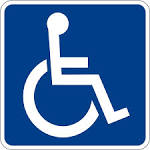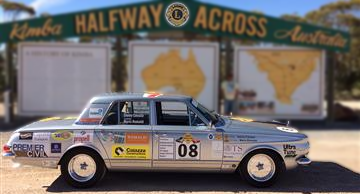Why DisabilityCare is no replacement for life insurance

When the concept of the DisabilityCare scheme (formerly known as the NDIS) was first announced by the Government, concerns were raised about the impact that it may have on people’s attitude toward life insurance.
It is clear that there is confusion about the scheme – what it is and what it is not.
A snapshot of DisabilityCare
DisabilityCare Australia will be aimed at those who are most in need, providing long term, high quality support for people who are born with, or who later acquire, a permanent disability that significantly affects their communication, mobility, self-care or self-management.
Support may be provided if the disablement is permanent or where early intervention can mitigate the impact on the individual’s ability to function (primarily aimed at children). Those accepted to participate in the scheme will have a personalised support plan developed and the necessary funding provided. It will also include a comprehensive information and referral service, to help people with disabilities who need access to mainstream, disability and community support.
Once fully operational, the scheme will provide support to about 410,000 individuals[1] – a fraction of the 4 million Australians who suffer some type of disablement and the 1.25 million with severe or profound disablement according to the ABS.
What DisabilityCare is not
| Is it covered? | What the scheme rules say | |
|---|---|---|
| Day-to-day living costs | NO !! | The scheme will not fund any day-to-day living costs that would generally be incurred by the general community (such as rent, groceries, utilities) except where this cost was not incurred as a direct result of the person’s disability. |
| Income replacement | NO !! |
The scheme will not provide support that is for income replacement purposes. The Disability Support Pension will continue to provide this level of support. |
Why personal life insurance is still important
1. The DisabilityCare scheme will not cover you for loss of income nor assist with other living expenses such as paying the rent or mortgage.
2. Personal insurance is concerned with whether the insured person meets the defined event and policy terms regardless of the level of support available to them through their families, carers or the community in general.
3. Personal insurance like Income Protection can provide you with a regular income while you are temporarily unable to work and may also include payment of rehabilitation expenses.
4. Critical illness or total and permanent disablement insurance gives you greater flexibility over how to use your lump sum benefit.
5. Lump sum benefits can be used to support rehabilitation, pay for necessary aids or future medical costs or to provide an income over the longer term.
6. Part of a personal life insurance benefit could also be used to pay for a holiday for your family or to supplement income that is foregone as you gradually return to work.
A practical example
John is 53, married to Ann with two high school age children. He suffers a stroke and is unable to work for six months but expects to be able to gradually return to work, albeit in a reduced capacity.
If John has income protection cover to age 65 then he’d receive the full monthly benefit while he is totally disabled and a partial benefit when he does eventually return to work in a reduced capacity provided he met the policy terms. This benefit would cover John’s loss of income.
If John has taken out Crisis Recovery cover then he would receive a lump sum benefit provided he meets the policy terms. This amount could be used to pay for out of pocket medical expenses and modifications to his car and home. John has control over how he chooses to spend this amount and could decide to take extended time off work. This amount could also cover any income foregone if Ann chose to stay at home to care for John.
If John was relying on qualifying for support under DisabilityCare, provided he was accepted for funding support, this could cover things like ongoing physiotherapy to assist with improved functioning and perhaps a motorised wheelchair to assist John’s mobility but would not provide income replacement support or cover other day-to-day living costs.
Impacts to underinsurance
Australians already chronically underinsure their lives. According to RiceWarner,[2] for total and permanent disability, the level of underinsurance is over $8 trillion and, for income protection alone, more than $600 billion. According to their research, the level of insurance cover held is less than 20% of need.
This is concerning given the number of Australians who will be impacted by accidents or illness each year. A 2008 survey conducted by the Melbourne Institute[3] found that more than 235,000 working-age Australians, living as members of a couple with dependent children, had suffered a serious illness or injury in the previous 12 months. This same survey found that more than 17,000 of this same cohort were unable to continue working due to illness, disability or injury during the previous 12 months. This emphasises the need for adequate levels of personal insurance.
For the everyday Australian, this should not necessarily be a choice between DisabilityCare and personal life insurance. It is impossible to predict whether a future disablement will be severe enough to qualify for DisabilityCare. Personal life insurance allows the individual to take control should the unexpected happen, whether it’s to replace income or provide a lump sum that can be used for a variety of purposes, such as to cover debts and other expenses.
DisabilityCare is a big step forward and will assist many people – but in our view, is no substitute for life insurance.
Source | AIA
[1] http://www.ndis.gov.au/about-an-ndis/frequently-asked-questions/
[2] Underinsurance in Australia, RiceWarner Actuaries, December 2012
[3] HILDA User Manual – Release 8, Melbourne Institute of Applied Economic and Social Research, The University of Melbourne 2010 (available at www.melbourneinstitute.com/hilda/statreport.html)






